The term ingrown toenail describes the piercing of the toenail into the surrounding skin – and its continual and painful
growth deeper into the skin. Even a small piece of nail (nail ‘spicule’) can cause a tremendous amount of pain
once it has entered the skin – think of it like a small, sharp dagger that moves around every time you take a step. Ouch! Ingrown
toenails can affect one or both sides of any toenail, though usually affect the big toe. In most cases, the nail edge will curve down into
the skin, however, the presence of extra or swollen skin surrounding the nails may obstruct regular nail growth and result in the nail
growing into it. Initially, the nail may push tightly against the skin which can cause tenderness and redness, but it is the moment the
nail cuts through the skin that it is deemed ‘ingrown’ and the risk of complications such as infection begins.
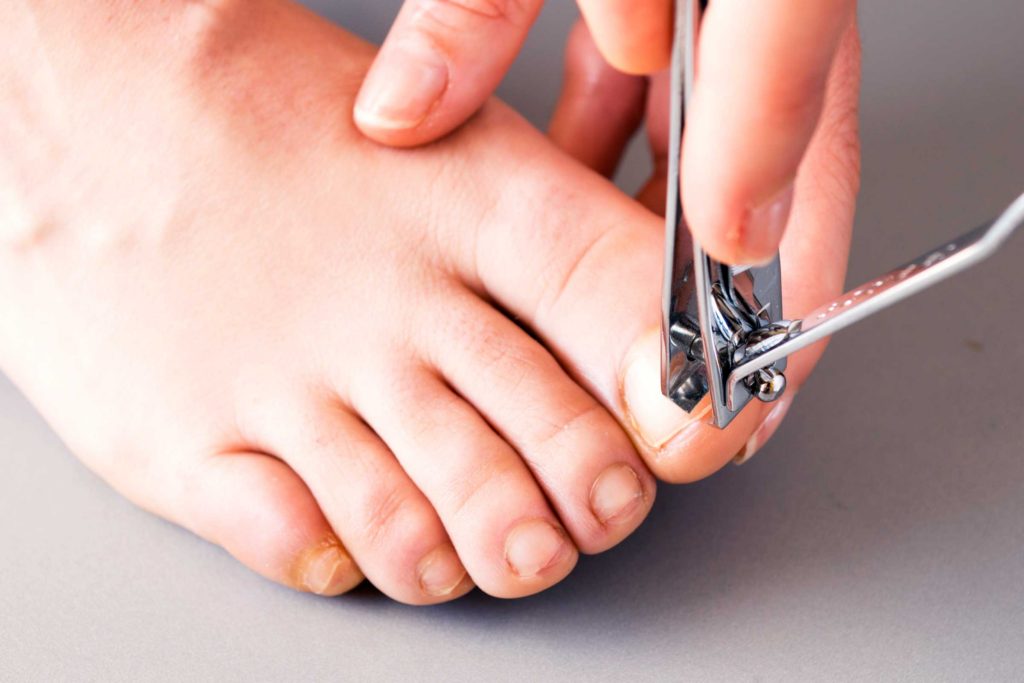 Various factors can encourage ingrown toenails, the most important common of which is an improper nail-cutting technique.
Nails should be cut in a straight, clean line with no fraying or split edges and no curves. Curving or ‘rounding’ the edges of the nail down
the side can encourage the nail to grow curved down into the skin. Another common culprit is pulling or picking the nails.
Pulling the top of the nail off, instead of cutting them in a straight line with a tool, can leave a spicule at the edge of the nail where
it is ripped off, often deep down the side of the nail where it is not visible or felt – until it starts growing and pierces the skin. Tight
footwear creates
pressure on the sides of the toes that can push the nail into the surrounding skin. The shape of the nail can
also play a role, especially where the nail is particularly involuted or curved. This is often linked to uncontrollable genetic factors that
dictate the features and shape of the nail.
Various factors can encourage ingrown toenails, the most important common of which is an improper nail-cutting technique.
Nails should be cut in a straight, clean line with no fraying or split edges and no curves. Curving or ‘rounding’ the edges of the nail down
the side can encourage the nail to grow curved down into the skin. Another common culprit is pulling or picking the nails.
Pulling the top of the nail off, instead of cutting them in a straight line with a tool, can leave a spicule at the edge of the nail where
it is ripped off, often deep down the side of the nail where it is not visible or felt – until it starts growing and pierces the skin. Tight
footwear creates
pressure on the sides of the toes that can push the nail into the surrounding skin. The shape of the nail can
also play a role, especially where the nail is particularly involuted or curved. This is often linked to uncontrollable genetic factors that
dictate the features and shape of the nail.
Ingrown toenails are usually easy to spot because of the marked swelling at the sides of the nail. Common symptoms include:
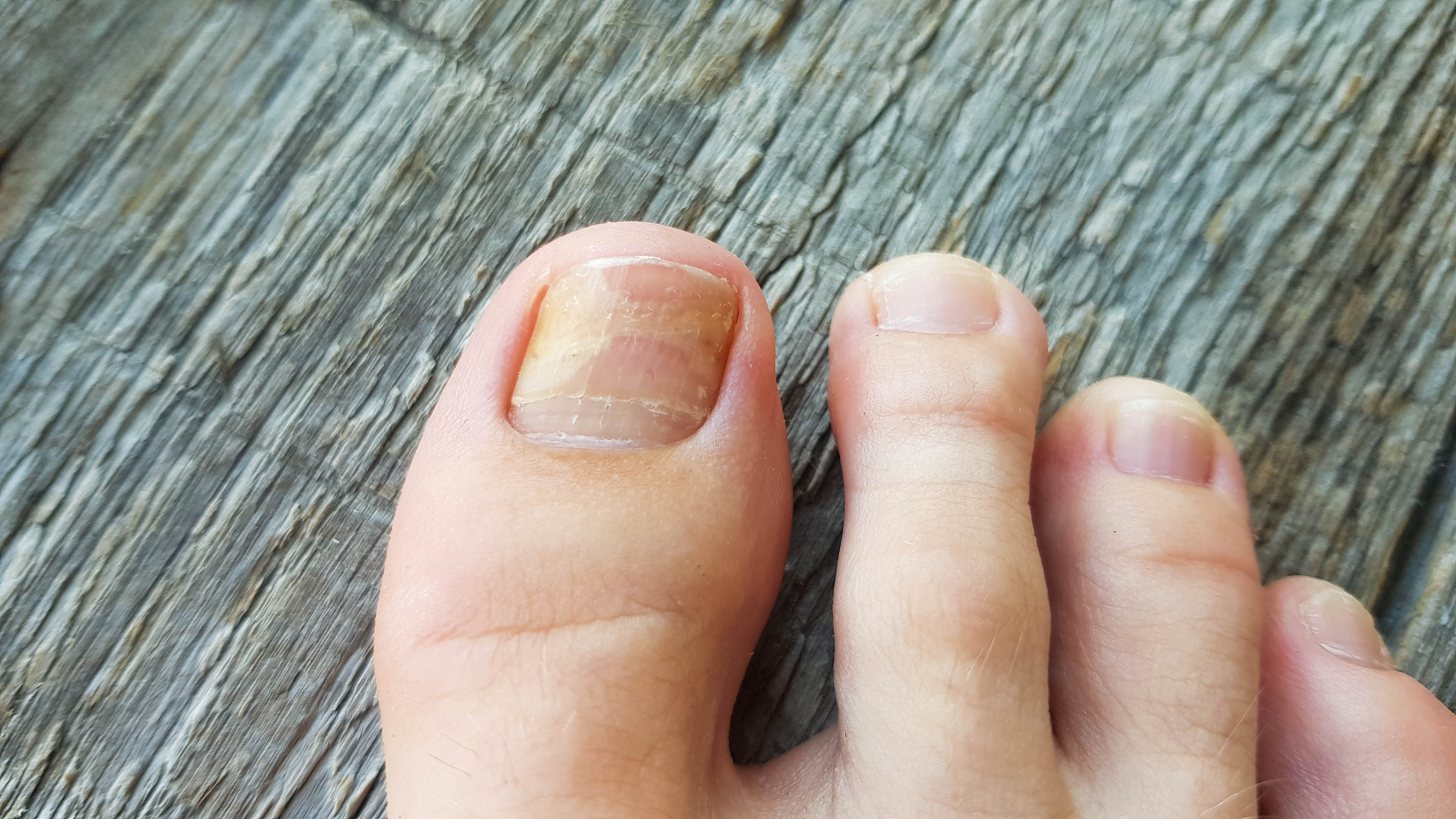 Redness
Redness
In severe cases, it will become difficult to wear shoes or have anything touching the toe, even something as light as a sheet in bed.
As with any opening in the skin, ingrown toenails carry with them the risk of infection, which is amplified by the location of the wound down at the feet. This makes seeking appropriate treatment for ingrown toenails very important, especially if you have diabetes, nerve damage or poor circulation, all of which increase your risk for adverse effects. Individuals with these conditions should not attempt to treat their ingrown toenails at home and should seek the help of their Podiatrist as soon as possible.
Ingrown toenail treatment ranges from a one-off conservative treatment to remove the ingrowing section of the nail and alleviate painful symptoms, or can be corrected permanently. When non-conservatively correcting an ingrown toenail, either a small section of the edge of the nail may be removed (none or a minimal change in appearance, called a partial nail avulsion) or the entire nail may be removed (total nail avulsion). Toenail surgeries are procedures that we often carry out in our clinic as a solution to toenails that have become ingrown, involuted, disfigured, thickened or are affecting a patient’s quality of life, comfort, their risk of injury, or other negative effects. The two main procedures we carry out are the:
Both of these procedures may be carried out with or without a chemical matrixectomy. The descriptions of each of these procedures are below.
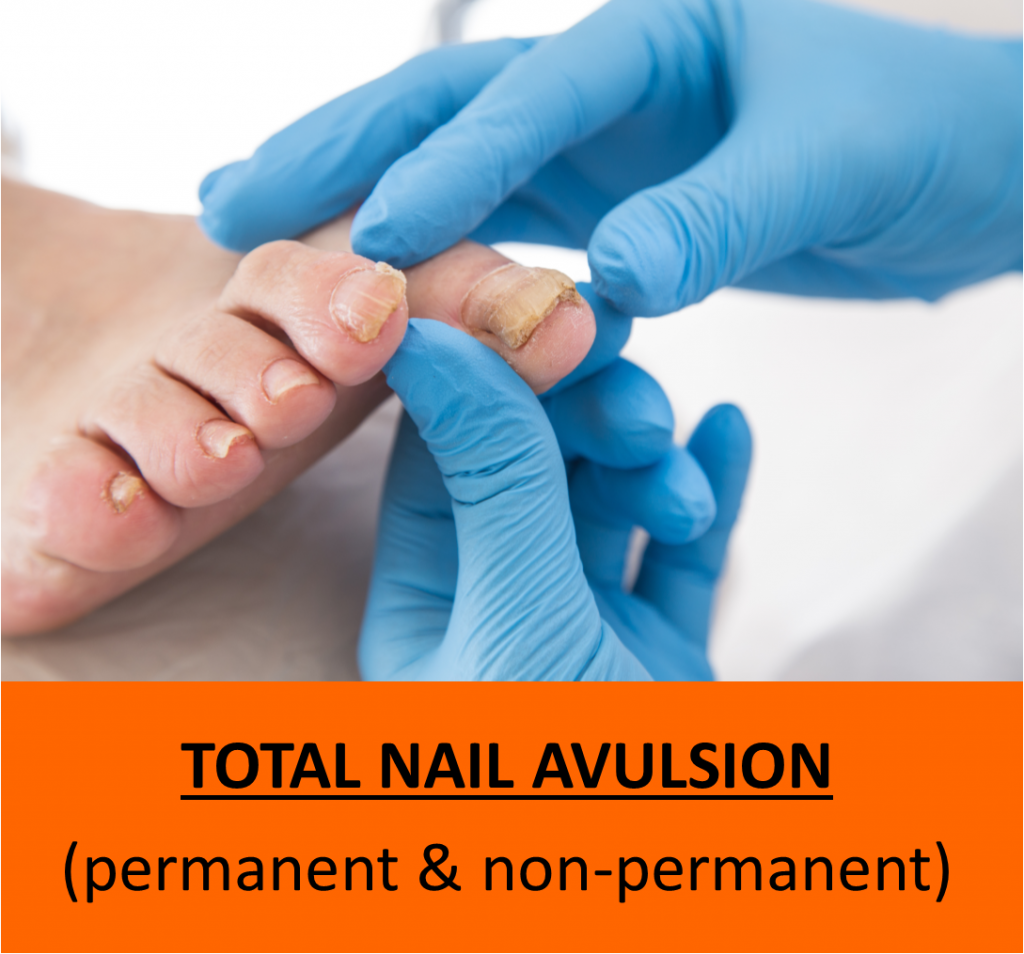
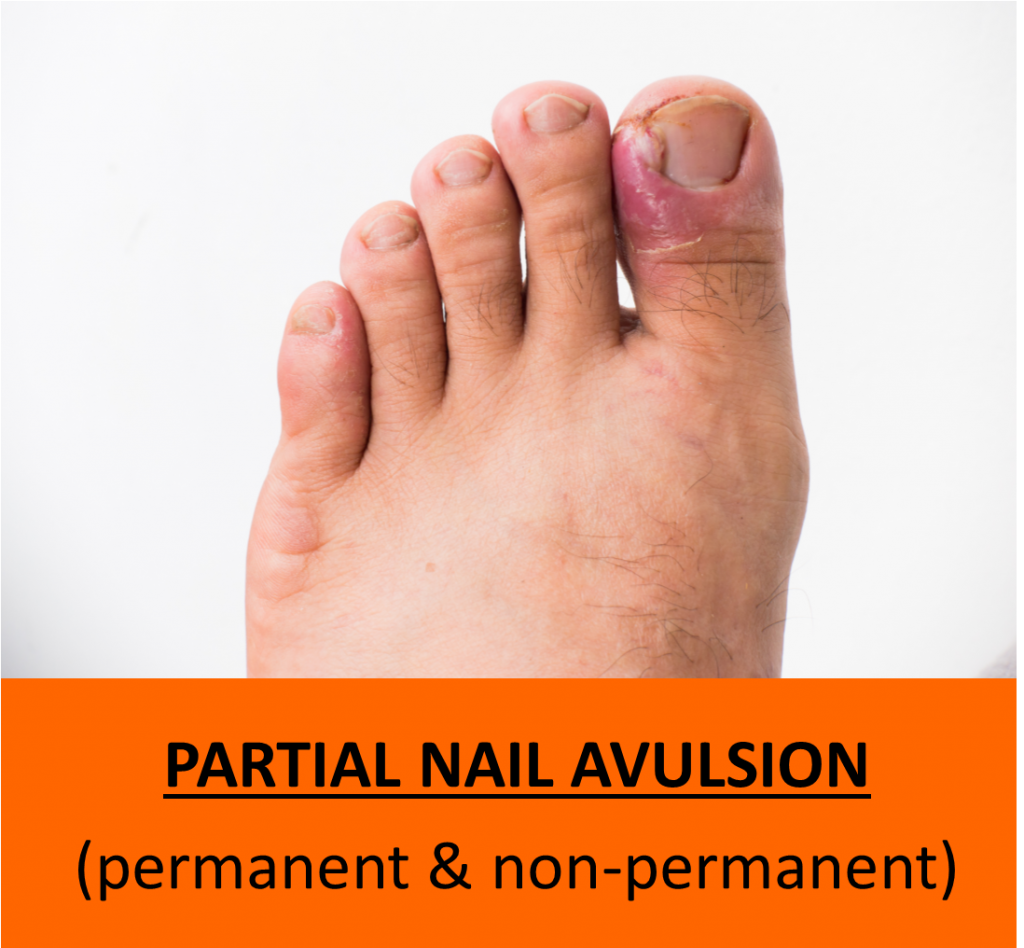
If you have diabetes, proper care for ingrown toenails is essential for your health. This is because some of the side effects of diabetes on your feet include numbness/losing the ability to feel and a reduction in blood flow and hence the ability to heal wounds effectively. These effects put you at risk of not being able to detect the telltale pain when a toenail becomes ingrown, as well as not being able to effectively clear any infections or heal the cut. This means the area is vulnerable to ulcerating and developing secondary infections, which are very dangerous to your overall health. Diabetic ulcerations are currently the leading cause of lower limb amputations – aside from traumatic injuries and accidents. If you have diabetes, we’ll assess the sensation in your feet to your overall assessment and discuss the best options for you for both now and the years to come.
We have the privilege of successfully treating hundreds of kids every year that are otherwise told by their GP’s that nothing can be done aside from taking a course of antibiotics to reduce the risk of infection. This is because we’re well equipped with all the smallest and finest tools to make alleviating ingrown toenails a simple and stress-free process – for both kids and parents alike! We find this to be a relatively common problem at primary school age, especially as kids are growing quickly and wearing a lot of tight shoes that have become too small for them seemingly overnight! You don’t have to walk to develop ingrown toenails either – we’ve treated infants as young as 3 months whose parents noticed redness around their toenail. Even if the toe does not appear very red or present with any swelling, ingrown toenails can still be extremely painful for your baby, child or teenager and won’t go away on its own.
To learn more about ingrown toenails and what causes them, click here. Learn why you should ditch the home remedies for ingrown toenails, click here.

If you’re unsure whether you should wear walking or running shoes when exercising, this article is for you.
We explain the differences between walking and running shoes and how to determine which one is best for your feet. When it comes to buying a new pair of shoes, most people walk into a store expecting to just “find something comfy.” Then, suddenly, you’re asked: Are you looking for
walking shoes or running shoes? And that’s where the confusion begins. Because for many people, the answer isn’t that simple.
You could walk a lot – to work, around the block, chasing after the kids, or while catching up with friends. You could have also just joined
a gym or registered for the Couch to 5km. Or you could be a walker who just wants the option to go for a run if the mood strikes. So, which
shoe do you pick?

Discover why foot health is so important as we age and how Perform Podiatry supports seniors in staying mobile, independent, and pain-free. From diabetic care to personalised treatment plans, we’re here to help keep your feet happy and healthy, every step of the way.
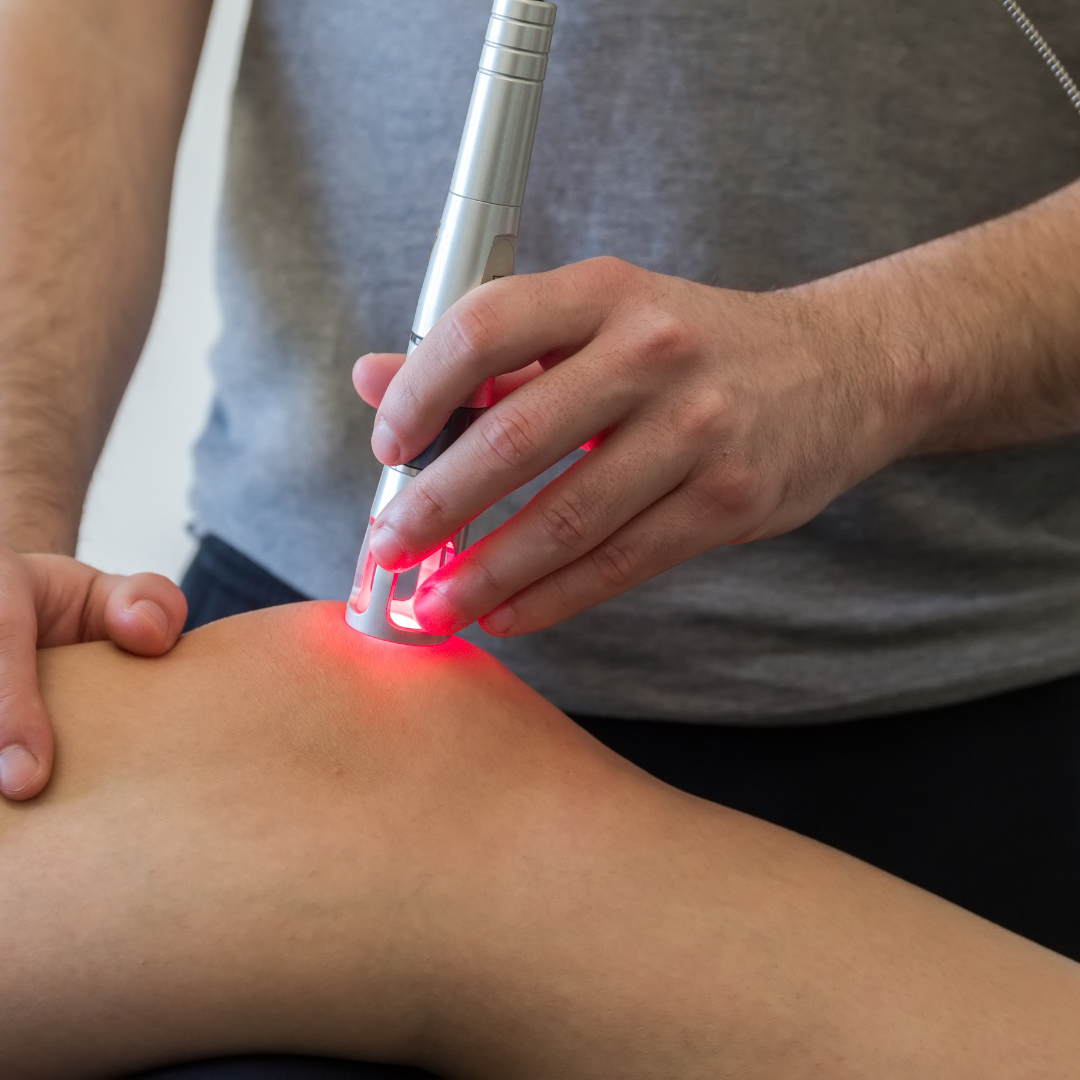
Discover how Class IV Laser Therapy at Perform Podiatry offers powerful, drug-free relief for foot and ankle pain. Backed by science, this advanced treatment helps you heal faster and move better, without the need for surgery or medication.
Keeping your family on their feet and helping them to walk, run, play and exceed their goals is why we love getting up in the morning.
Ground Floor, One Health Building
122 Remuera Rd, Remuera
Auckland 1050, New Zealand
| MON - FRI | 7:30am – 6:30pm |
| SAT | 8:30am – 4:30pm |
| SUN | Some availability |
Make an Appointment
Online Schedule
Our virtual receptionist is available 24/7 to help with general questions, booking requests, and clinic information, even when our team is busy, or it's after hours.
Whether you're calling us or using our website, you'll get fast assistance any time of day. And if your query needs a personal touch, a member of our team will follow up as soon as possible.